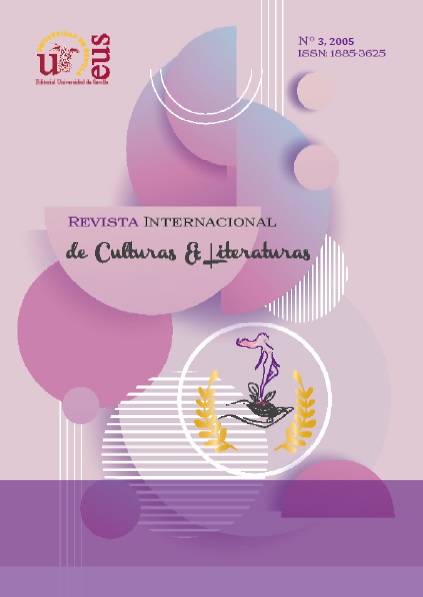DONNE SVENTRATE E UOMINI SCUOIATI. CORPO FEMMINILE E CORPO MASCHILE NELLE CERE ANATOMICHE
DOI:
https://doi.org/10.12795/RICL.2005.i03.01Palabras clave:
pezzi anatomici, convenzione borghese, passionale, morbidezza, supina, atarassico, durezza, verticalitàResumen
En 1775 se inauguró en el Museo della Specola de Florencia una exposición de "piezas anatómicas", es decir, representaciones plásticas de órganos humanos. La escultura más interesante de la colección es sin duda la "Venus de 'Medici". Todos los que admiraron este trabajo no se sorprendieron. La vista de estas ceras es una iniciación del hombre en el mundo de los adultos. En cuanto a los "hombres desollados", se representa un "Adán anatómico". Las diferencias son evidentes: la mujer es apasionada, personifica la suavidad y su postura es supina; el hombre es atáxico (no muestra sufrimiento), su posición es erguida y se refiere a la dureza y la verticalidad.
Abstract
In 1775, an exhibition of "anatomical pieces", that is plastic representations of human organs, was inaugurated at the Museo della Specola in Florence. The most interesting sculpture in the collection is undoubtedly the "Venus de 'Medici". All those who admired this work were not shocked. The sight of these waxes is an initiation of men into the world of adults. As far as the "skinned men" is concerned, an "anatomical Adam" is represented. The differences are evident: the woman is passionate, personifies softness and her position is supine; man is ataraxic (he does not show suffering), his position is erect and refers to hardness and verticality.
Descargas
Citas
Sito della collezione di cere anatomiche del Museo della Specola di Firenze:
http://www.specola.unifi.it/cere/
Aa. Vv, Encyclopaedia Anatomica, Taschen, Colonia-Londra-Madrid-New York-ParigiTokyo 1999.
Aa. Vv, «La ceroplastica nella scienza e nell’arte», Atti del I Congresso Internazionale, Olschki, Firenze 1977, 2 voll.
Blessington M. contessa di, The Idler in Italy, Galignani, Parigi 1839.
Bucci M., Anatomia come arte, il Fiorino, Firenze 1976.
de Ceglia F. P., «Rotten corpses, a disembowelled woman, a flayed man. Images of the body from the end of the 17th to the beginning of the 19th century florentine wax models in the first-hand accounts of visitors», Perspectives on science, 2006.
Diderot D., Correspondance, ed. Roth G., Edition de minuit, Paris 1963.
Goethe J. W., Wilhelm Meisters Wanderjahre, ed. Neumann G., Dewitz H. G., in Sämtliche Werke, Deutscher Klassiker Verlag, Francoforte sul Meno, 1993, vol. X.
Hilloowala R. (a cura di), The Anatomical Waxes of La Specola, Arnaud, Firenze 1995.
Jordanova L., Sexual Visions. Images of Gender in Science and Medicine between the Eighteenth and Twentieth Centuries, The University of Wisconsin Press, Madison 1989.
Kádár Z., «Sul profilo barocco della cosiddetta “Venere dei Medici” di cera», in Aa. Vv., La ceroplastica nella scienza e nell’arte. Atti del I Congresso Internazionale. Florence: Olschki, 1977, pp. 525-31.
Kleindienst H., Ästhetisierte Anatomie aus Wachs. Ursprung, Genese, Integration, Tesi di dottorato, Univiversität Marburg, Marburgo 1989, 2 voll.
Knoefel P. K., «Florentine Anatomical Models in Wax and Wood», Medicina nei secoli, 1978 (15), pp. 329-40.
Lanza B., Azzaroli Puccetti M. L., Poggesi M., Martelli A., Le Cere Anatomiche della Specola, Arnaud, Firenze 1997.
Le Fur Y., Esthétique des cires anatomiques de Gaetano Giulio Zumbo (1656-1701) à Pierre Spitzner (1834-1896), Tesi di dottorato, Paris I Panthéon-Sorbonne, Parigi 1989 Lemire M., Artistes et mortels, Chabaud, Parigi 1990.
Maerker A. «Uses and Publics of the Anatomical Model Collections of La Specola, Florence, and the Josephinum, Vienna, around 1800», in M. Beretta (ed.), From Private to Public. Natural Collections and Museums, Science History Publications, Usa 2005, pp. 81-96.
Marei Krüger-Fürhoff I., «Der vervollständigte Torso und die verstümmelte Venus. Zur Rezeption antiker Plastik und plastischer Anatomie in Ästhetik und Reiseliteratur des 18. Jahrhunderts», Zeitschrift für Germanistik, n. f., 1998, (8), pp. 361-73.
Mazzolini R., «Plastic Anatomies and Artificial Dissections, in Models», The Third dimension of science, ed. de Chadarevian S., Hopwood N., Stanford University Press, Stanford 2004, pp. 43-70.
Pyke E. J., A Biographical Dictionary of Wax Modellers, Clarendon Press, Oxford 1973-86, 4 voll Sade A. F. D. marchese de, Les cent-vingt journées de Sodome, in Œuvres complètes, J. J. Pauvert, Parigi 1986, vol. I.
Schnalke T., Disease in Wax. The History of Medical Moulage, Quintessence, Berlino 1995.
Sheriff M. D., The Exceptional Woman. Elisabeth Vigée-Lebrun and the Cultural Politics of Art, University of Chicago Press, Chicago e Londra 1996.
Vigée Lebrun E., Souvenirs, H. Fournier, Parigi 1835-37, 3 voll.

